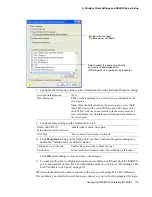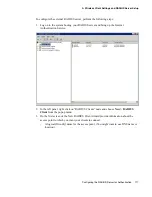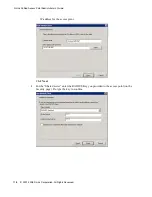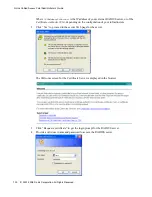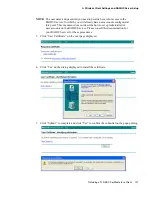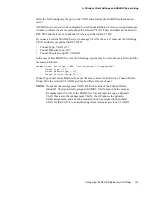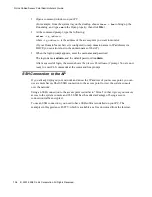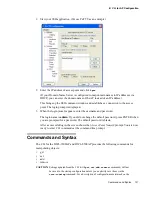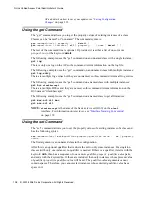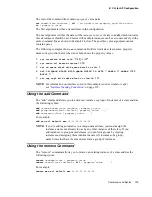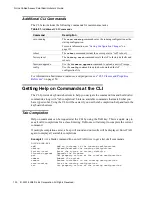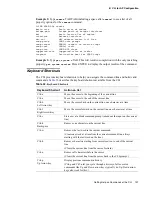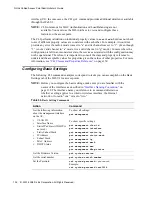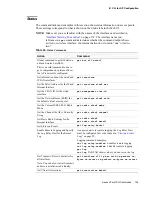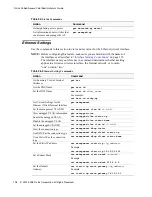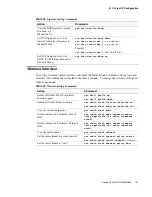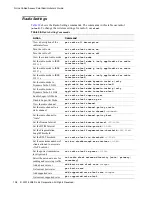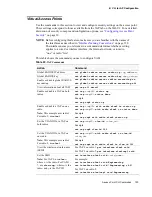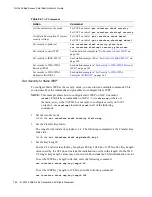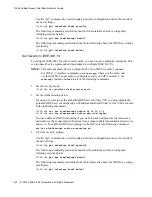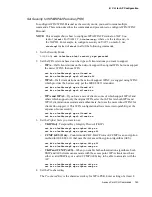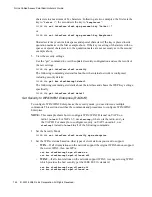
Commands and Syntax 129
B CLI for AP Configuration
The rest of the command line contains property-value pairs.
set
named-class instance
|
all
[ with
qualifier-property qualifier-value ...
to
]
property value...
The first argument is either a named class in the configuration.
The next argument is either the name of the instance to set, or the keyword all, which indicates
that all instances should be set. Classes with multiple instances can be set consecutively in the
same command line as shown in Example 4 below. The qualifier-value arguments cannot
contain spaces.
The following examples show
set
commands. Bold text indicates class names, property
names or keywords; the text that is not bold shows the property values.
1.
set interface wlan0 ssid
“Vicky's AP”
2.
set radio all beacon-interval
200
3.
set tx-queue wlan0 with queue data0 to aifs
3
4.
set tx-queue wlan0 with queue data0 to aifs
7
cwmin
15
cwmax
1024
burst
0
5.
set vap vap2 with radio wlan0 to vlan-id
123
NOTE: For information on interfaces used in this example (such as wlan0 or vap2)
see
“Interface Naming Convention”
on page 132.
Using the add Command
The “add” command allows you to add a new instance or group of instances of a class and has
the following syntax:
add
unique-named-class instance
[
property value ...
]
add
group-named-class instance
[
property value ...
]
add
anonymous-class
[
property value ...
]
For example:
add mac-acl default mac
00:01:02:03:04:05
NOTE: If you’re adding an instance to a unique-named class, you must assign the
instance a name not already in use by any other instance of that class. If you
add instances to group-named classes, you can form groups by creating
instances and assigning them identical names. All instances of a group-
named class that have the same name form a group of instances.
Using the remove Command
The “remove” command allows you to remove an existing instance of a class and has the
following syntax:
remove
unnamed-class
[
property value
. . . ]
remove
named-class instance
|
all
[
property value
. . .]
For example:
remove mac-acl default mac
00:01:02:03:04:05

